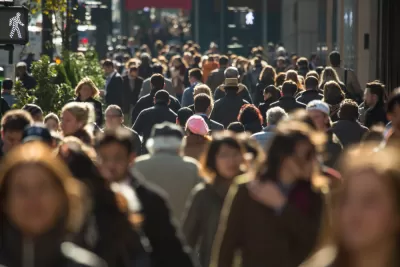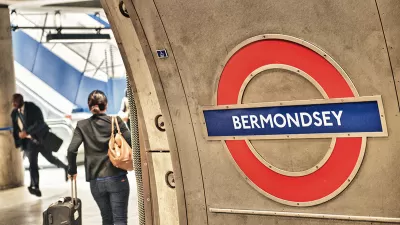A new guide helps communities set up groups that can help analyze their neighborhood data and put it to good use.

"Local data intermediaries" work with raw government data to produce accessible neighborhood indicators, which residents and stakeholders can use to fuel the changes and improvements communities want to see.
A guide to creating the intermediaries was published May 31 by National Neighborhood Indicators Partnership (NNIP)—a network of more than 20 such groups—and the Urban Institute.
Two scholars from the Institute explain in Next City that liaising between government and communities requires "trust, technical expertise, knowledge of the local context and coordination among multiple stakeholders." But if successful, they say, intermediaries can help "surface, explain and address the issues distressed communities face."
They give special note to NNIP's Baltimore chapter, which was able to add to the national discussion about the 2015 death of Freddie Gray in police custody by drawing on 15 years' worth of data about his neighborhood.
FULL STORY: Your City Needs a Local Data Intermediary Now

Alabama: Trump Terminates Settlements for Black Communities Harmed By Raw Sewage
Trump deemed the landmark civil rights agreement “illegal DEI and environmental justice policy.”

Planetizen Federal Action Tracker
A weekly monitor of how Trump’s orders and actions are impacting planners and planning in America.

The 120 Year Old Tiny Home Villages That Sheltered San Francisco’s Earthquake Refugees
More than a century ago, San Francisco mobilized to house thousands of residents displaced by the 1906 earthquake. Could their strategy offer a model for the present?

In Both Crashes and Crime, Public Transportation is Far Safer than Driving
Contrary to popular assumptions, public transportation has far lower crash and crime rates than automobile travel. For safer communities, improve and encourage transit travel.

Report: Zoning Reforms Should Complement Nashville’s Ambitious Transit Plan
Without reform, restrictive zoning codes will limit the impact of the city’s planned transit expansion and could exclude some of the residents who depend on transit the most.

Judge Orders Release of Frozen IRA, IIJA Funding
The decision is a victory for environmental groups who charged that freezing funds for critical infrastructure and disaster response programs caused “real and irreparable harm” to communities.
Urban Design for Planners 1: Software Tools
This six-course series explores essential urban design concepts using open source software and equips planners with the tools they need to participate fully in the urban design process.
Planning for Universal Design
Learn the tools for implementing Universal Design in planning regulations.
Clanton & Associates, Inc.
Jessamine County Fiscal Court
Institute for Housing and Urban Development Studies (IHS)
City of Grandview
Harvard GSD Executive Education
Toledo-Lucas County Plan Commissions
Salt Lake City
NYU Wagner Graduate School of Public Service





























